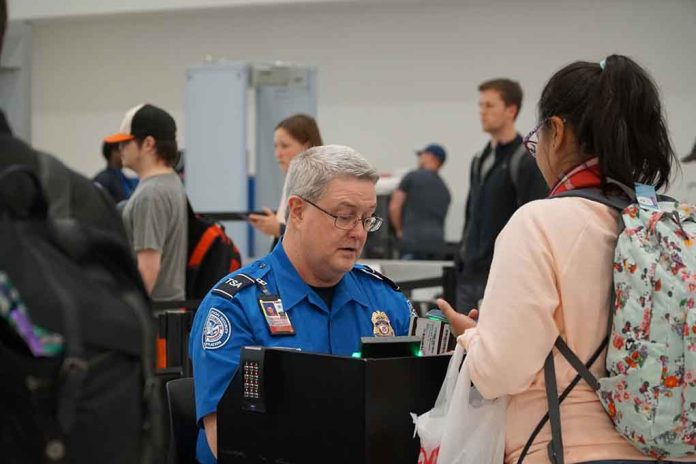
The TSA is cracking down on passengers carrying “cat eyes” keychain weapons, warning that their innocent appearance won’t save them from confiscation.
At a Glance
- TSA officials in Albany warn about an increase in concealed “cat eyes” weapons.
- “Cat eyes” resemble brass knuckles but are shaped like a cat’s face, equipped with pointed edges.
- The TSA classifies “cat eyes” as clubs and prohibits them in carry-on luggage.
- If detected, passengers must choose to return them or surrender them to TSA.
- The presence of “cat eyes” delays security procedures and inconveniences other travelers.
Surge in “Cat Eyes” Keychain Weapons
The TSA has recently reported a significant increase in passengers attempting to carry “cat eyes” keychain weapons through security checkpoints. Despite their cute and innocent appearance, these items are designed for self-defense and equipped with pointed edges capable of causing harm. TSA officials in Albany have stressed the security risks and delays these items cause during screenings.
“Cat eyes” are self-defense tools that mimic the shape of a cat’s face, similar to brass knuckles, but with pointed ears intended for stabbing. They are usually made of metal or hard plastic, which passengers might not realize are classified as weapons. According to the TSA, “cat eyes” are considered clubs and are thus forbidden in carry-on luggage.
TSA warns of uptick in concealed ‘cat eyes’ keychain weapon https://t.co/w4RdvahRAm pic.twitter.com/EixEvhK8Fi
— New York Post (@nypost) September 3, 2024
Classification and Consequences
The TSA offers travelers multiple options if “cat eyes” are found during screenings: return them to their vehicle, hand them off to a non-traveling companion, place them in a checked bag, or surrender them to TSA for disposal. In the words of the TSA, “At that point, the TSA officers give the traveler their choices to either return the item to their vehicle; hand them off to a non-traveling companion; return to the airline counter to place them in a checked bag; or voluntarily surrender them to TSA for disposal.”
The inconsistency of passengers remembering they carry such items, often attached to keychains, leads to delays. Bart R. Johnson, the TSA Federal Security Director for 13 airports in Upstate New York, lamented, “We come across these items daily and it slows down passengers who must stop and wait for our officers to remove the offending item and it backs up the line for the other travelers.”
Broader Implications and Vigilance
The TSA’s vigilance is not limited to “cat eyes.” Last year, they confiscated a record 6,737 firearms at checkpoints, with 93% loaded. Many travelers are equally unaware of proper procedures for transporting these items, which contribute to queues and potential security risks. Specific checkpoints have seen incidents involving a loaded .380 Smith & Wesson, double edge knives, and even inert grenades causing security pauses and lane closures.
Johnson praised TSA officers, saying, “Our officers are diligent in their duties and are good at spotting these weapons using the technologies at our checkpoints. I commend them for their continued vigilance and ask travelers to be equally diligent themselves and leave these items at home when packing for a flight.” The challenge remains ensuring passengers understand and follow these guidelines to maintain efficient and secure air travel.

















